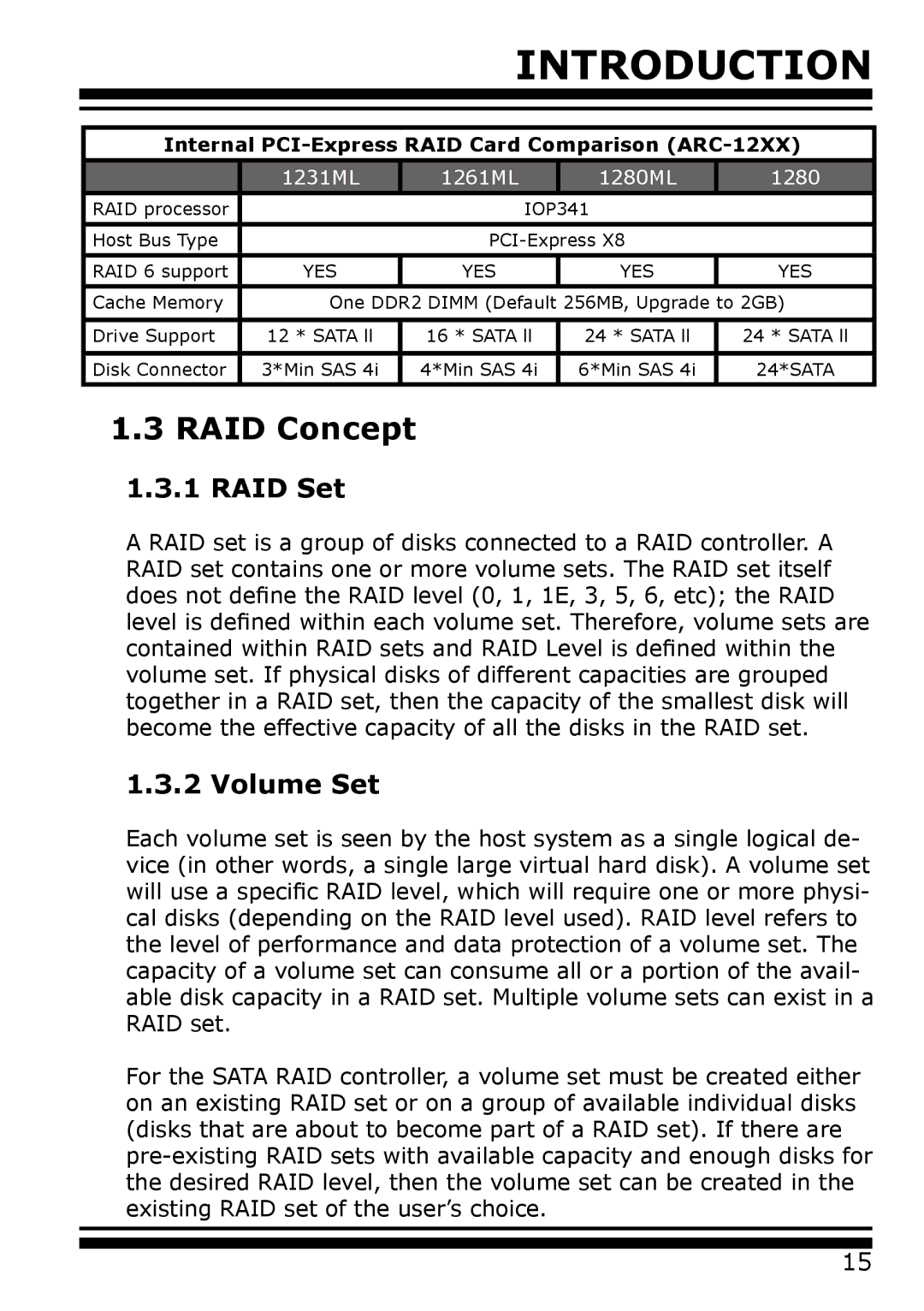
INTRODUCTION
Internal PCI-Express RAID Card Comparison (ARC-12XX)
| 1231ML | 1261ML | 1280ML | 1280 |
|
|
|
|
|
RAID processor |
| IOP341 |
| |
|
|
|
| |
Host Bus Type |
|
| ||
|
|
|
|
|
RAID 6 support | YES | YES | YES | YES |
Cache Memory | One DDR2 DIMM (Default 256MB, Upgrade to 2GB) | |||
|
|
|
|
|
Drive Support | 12 * SATA ll | 16 * SATA ll | 24 * SATA ll | 24 * SATA ll |
|
|
|
|
|
Disk Connector | 3*Min SAS 4i | 4*Min SAS 4i | 6*Min SAS 4i | 24*SATA |
|
|
|
|
|
1.3RAID Concept
1.3.1RAID Set
A RAID set is a group of disks connected to a RAID controller. A RAID set contains one or more volume sets. The RAID set itself does not define the RAID level (0, 1, 1E, 3, 5, 6, etc); the RAID level is defined within each volume set. Therefore, volume sets are contained within RAID sets and RAID Level is defined within the volume set. If physical disks of different capacities are grouped together in a RAID set, then the capacity of the smallest disk will become the effective capacity of all the disks in the RAID set.
1.3.2 Volume Set
Each volume set is seen by the host system as a single logical de- vice (in other words, a single large virtual hard disk). A volume set will use a specific RAID level, which will require one or more physi- cal disks (depending on the RAID level used). RAID level refers to the level of performance and data protection of a volume set. The capacity of a volume set can consume all or a portion of the avail- able disk capacity in a RAID set. Multiple volume sets can exist in a RAID set.
For the SATA RAID controller, a volume set must be created either on an existing RAID set or on a group of available individual disks (disks that are about to become part of a RAID set). If there are
15
